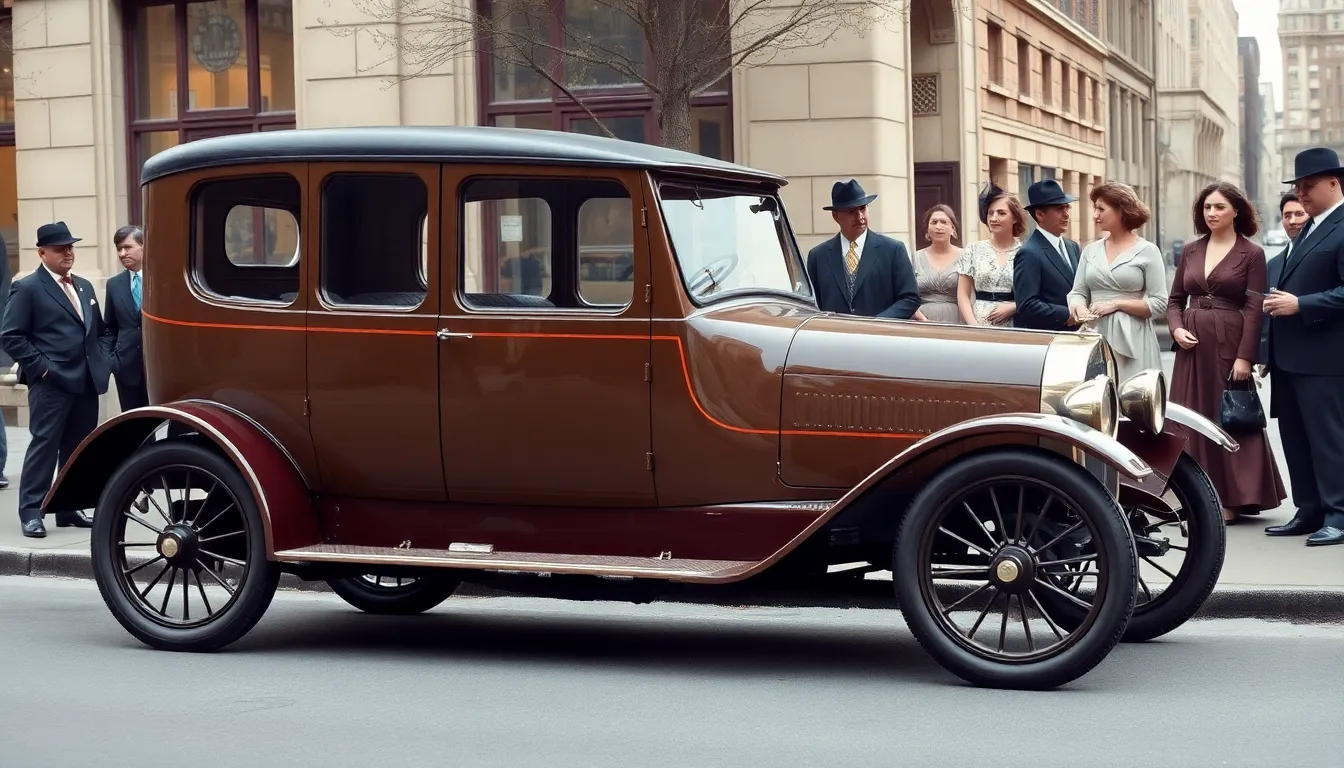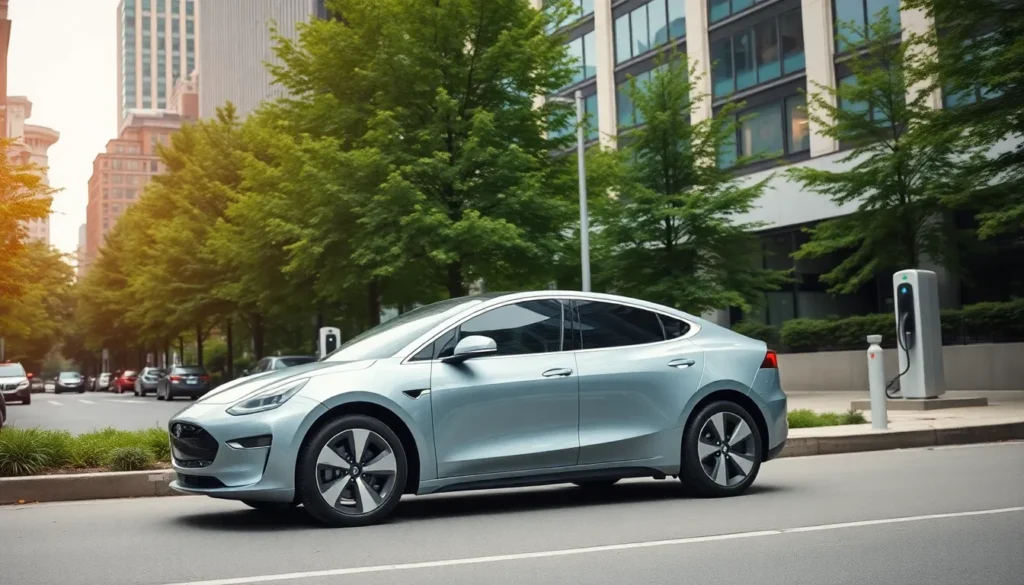Electric cars—those sleek, silent machines gliding by without a hint of exhaust—might seem like a modern marvel, but their roots trace back much further than most realize. Picture this: the 1830s, when inventors were tinkering away with batteries and motors, dreaming of a world where cars could run without the cacophony of a gas engine. Who knew that these early experiments would spark a revolution in transportation?
Table of Contents
ToggleThe Early Beginnings of Electric Cars
Electric cars trace their origins back to the 1830s, when inventors commenced experiments with batteries and motors. These early developments paved the way for advancements in electric vehicle technology.
The First Electric Vehicles
The creation of the first electric vehicles coincided with the invention of the electric motor. In 1832, Robert Anderson built an early version of an electric carriage powered by non-rechargeable batteries. Around the same period, a Scottish inventor named K. F. Benz developed a small electric motor that powered a simple carriage. These initial attempts demonstrated the feasibility of electric-powered transport.
Key Innovations in the 19th Century
Innovations during the 19th century significantly advanced electric vehicle technology. In 1865, French engineer Gustave Trouvé showcased a three-wheeled vehicle powered by an electric motor and rechargeable batteries. By 1890, the first practical electric automobile emerged, designed by American inventor Thomas Parker, who utilized rechargeable batteries for better efficiency. The establishment of a charging infrastructure soon followed, fostering further development in the electric vehicle market.
The 20th Century Shift

The 20th century marked a pivotal turning point for electric cars. Innovations and market dynamics contributed to both growth and decline.
The Rise and Fall of Electric Cars
Electric vehicles gained popularity in the early 1900s, attracting consumers seeking quiet, easy-to-operate cars. By 1912, electric cars accounted for 38 percent of all vehicles in the U.S. However, advancements in gasoline engines led to a significant decline in electric car sales. The introduction of affordable gasoline-powered vehicles rendered electric options less competitive. By the late 1920s, electric cars largely disappeared from the mainstream market. Factors such as limited range and lack of infrastructure contributed to their decline.
Major Players in the Industry
Several companies emerged as key players in the electric car market during the 20th century. Baker Motor Vehicle Company manufactured electric cars in the early 1900s, known for their quality and reliability. Thomas Parker’s early contributions aided in the establishment of electric infrastructure. Detroit Electric produced popular models in the 1920s, catering to affluent buyers. Despite innovations, competition from gasoline vehicles reduced their market share. By the 1930s, the prominence of electric automobiles faded, as companies pivoted to produce gasoline models.
The Modern Electric Car Revolution
The modern electric car revolution transformed the automotive landscape. This shift began with significant advancements in electric vehicle technology and growing environmental awareness.
Technological Advancements in Battery Technology
Lithium-ion batteries emerged as a crucial innovation, offering higher energy densities and lighter weights than earlier battery types. These batteries allowed electric cars to achieve longer ranges, addressing consumer concerns about distance. Chargers also evolved, enabling faster charging times and greater convenience for users. Modern production techniques reduced costs, making electric vehicles more accessible. Companies like Tesla and Nissan led the push for improved battery performance, resulting in models such as the Tesla Model S and Nissan Leaf, which showcased substantial advancements. The automotive industry’s focus shifted toward enhancing battery life and efficiency, marking a pivotal moment in electric vehicle development.
The Role of Environmental Awareness
Awareness of environmental issues played a major role in the resurgence of electric cars. Concerns about greenhouse gas emissions and climate change sparked interest in sustainable alternatives. Many consumers began prioritizing eco-friendly transportation options, driving demand for electric vehicles. Government policies also influenced this trend by promoting electric vehicles through incentives and subsidies. Organizations and movements advocating for cleaner air further highlighted the benefits of electric cars. The connection between public health and pollution emphasized the urgency for cleaner transportation solutions. Stakeholders recognized that electric vehicles could contribute significantly to reducing carbon footprints while improving air quality.
Current Trends in Electric Vehicle Adoption
Electric vehicle adoption has surged in recent years, fueled by a combination of consumer interest and supportive government initiatives. This evolving landscape reflects a shift in both policies and market dynamics.
Government Policies and Incentives
Government policies have significantly influenced electric vehicle growth. Numerous programs offer tax credits for electric vehicle purchases, making them more financially appealing. States like California provide additional rebates and incentives that enhance affordability. Regulations aimed at reducing emissions encourage manufacturers to invest in cleaner technologies. A commitment to expanding charging infrastructure further supports adoption. As legislation and incentives evolve, they drive consumer choice towards electric vehicles, paving the way for a greener future.
Consumer Preferences and Market Dynamics
Consumer preferences increasingly prioritize sustainability and environmental impact. Shifts in demographics reveal that younger generations favor electric vehicles for their eco-friendly benefits. Furthermore, the excitement around advancements in battery technology resonates with consumers seeking longer-range options. Market dynamics reflect competition among automakers, leading to a broader variety of electric models. Brands like Tesla and Ford respond to demand with innovative designs that appeal to diverse consumers. Rising fuel prices also enhance the attractiveness of electric vehicles, positioning them as a practical choice in today’s market.
The journey of electric cars spans nearly two centuries, evolving from early experiments to a modern-day revolution. As technology improved and environmental concerns gained prominence, electric vehicles began to reclaim their place in the automotive industry.
Today’s electric cars represent a significant shift in consumer preferences and industry standards. With advancements in battery technology and supportive government policies, electric vehicles are more accessible and appealing than ever.
As the world embraces sustainable transportation, the future of electric cars looks bright, promising a cleaner and more efficient way to travel.




